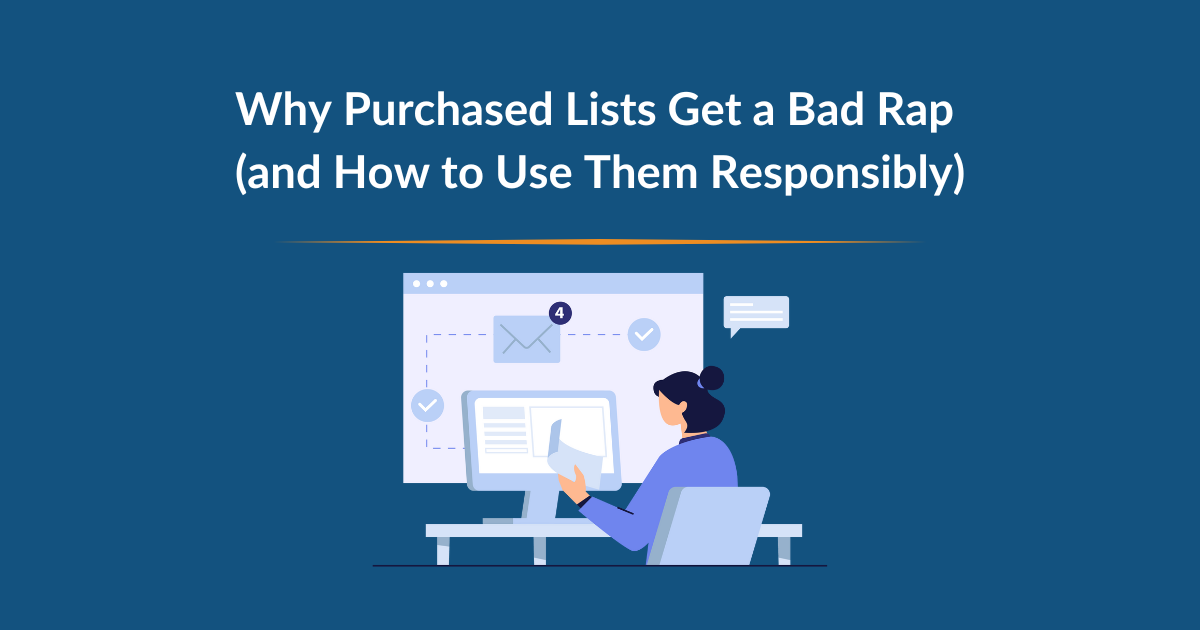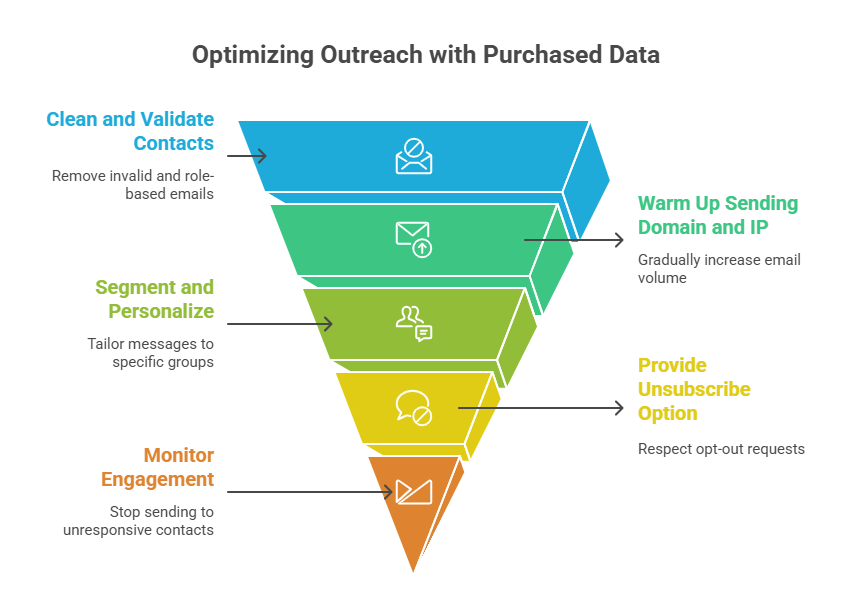
Why Purchased Lists Get a Bad Rap (and How to Use Them Responsibly)
Author: MailClickConvert Team
Last Updated: October 2, 2025
The stigma around purchased lists
Ask any marketer about purchased email lists and you’ll probably hear the same reaction: “Don’t do it.” Over the years, bought lists have been lumped in with spam, poor deliverability, and legal risks. Platforms like Mailchimp and HubSpot reinforce that perception by banning them outright.
The truth, however, is more nuanced. Purchased lists can cause problems if they’re used recklessly. But with the right process and the right infrastructure, they can still be a valuable part of a cold outreach strategy.
Why purchased lists got a bad name
The bad reputation didn’t appear out of nowhere. Most of it comes from how these lists were historically used.
Many vendors sold outdated or scraped contacts, which led to sky-high bounce rates. Recipients who never opted in hit the spam button, and email service providers started cracking down. At the same time, laws like CAN-SPAM and GDPR created new rules around compliance.
To make things simpler, the major ESPs decided to avoid the risk entirely. Mailchimp policy, spells it out clearly in their policy: purchased or rented lists are prohibited. For them, it’s easier to block third-party data than to police how responsibly it’s used.
The result? A widespread belief that emailing a purchased list is always “illegal” or guaranteed to fail.
The reality: it’s legal when done right
Here’s the key point most people miss: in the U.S., sending to purchased lists is legal under CAN-SPAM as long as you follow the rules. That means your email needs a real physical address, a working unsubscribe link, and honest subject lines.
What Mailchimp and HubSpot enforce are their business policies, not federal law. They want to protect their shared infrastructure from spam complaints. If you’ve ever been banned after uploading third-party contacts, that’s why.
So instead of asking “Can I email purchased lists?” the better question is “How do I do it responsibly?”
What responsible use looks like
Responsible outreach with purchased data isn’t about blasting 50,000 strangers and hoping for the best. It’s about treating the list with care.
- Start by cleaning and validating every contact. Invalid addresses and role-based emails (like info@ or sales@) drag your reputation down fast.
- Warm up your sending domain and IP gradually. A brand-new sender suddenly emailing thousands of contacts is a red flag for spam filters.
- Segment and personalize your outreach. Generic mass emails get ignored.
- Always include an unsubscribe option and remove contacts who opt out.
- Watch engagement. If someone never opens or replies, stop sending to them.

👉 Read more: The Do's and Don'ts of Sending Emails to a Purchased List
When you combine these practices, a purchased list doesn’t have to be a liability. It can be a channel for finding new customers, without putting your domain at risk.
How MailClickConvert helps
Most marketers struggle because the tools they’re using weren’t built for purchased lists. That’s exactly why we built MailClickConvert.
- Lists are automatically cleaned on upload to cut bounces.
- Campaigns run on dedicated IPs and domains, so your primary domain stays safe.
- Our system includes built-in warmup tools to protect deliverability.
- Compliance is handled for you: unsubscribes, suppression lists, and CAN-SPAM safeguards are standard.
- Detailed analytics and reporting give you visibility into what’s working.
👉 Learn more about our platform: MailClickConvert Features
Instead of fighting with platforms that ban purchased lists, you can focus on reaching your audience with the right message.
Responsible use in practice
Picture this: a B2B agency buys a vetted list of CFOs across different industries. With MailClickConvert, they clean the data, warm up a new sending domain, and segment by vertical. The campaign goes out to targeted groups with personalized messaging.
Instead of the usual flood of bounces and spam complaints, they see solid engagement: strong open rates, meaningful replies, and no domain damage.
That’s the difference between blasting blindly and using purchased lists responsibly.
Final thoughts
Purchased lists will always carry a certain stigma, and to be fair, they’ve earned it. For years, they were abused by marketers chasing quick wins. But dismissing them entirely means overlooking a legitimate way to reach new markets.
The real issue isn’t the list itself. It’s how you use it. With the right practices and the right platform, purchased lists can be a safe, compliant, and effective part of your cold email strategy.
👉 Related read: Cold Email Strategy Guide
Ready to put this into action? Try MailClickConvert today and see how responsible cold outreach can drive real results.

